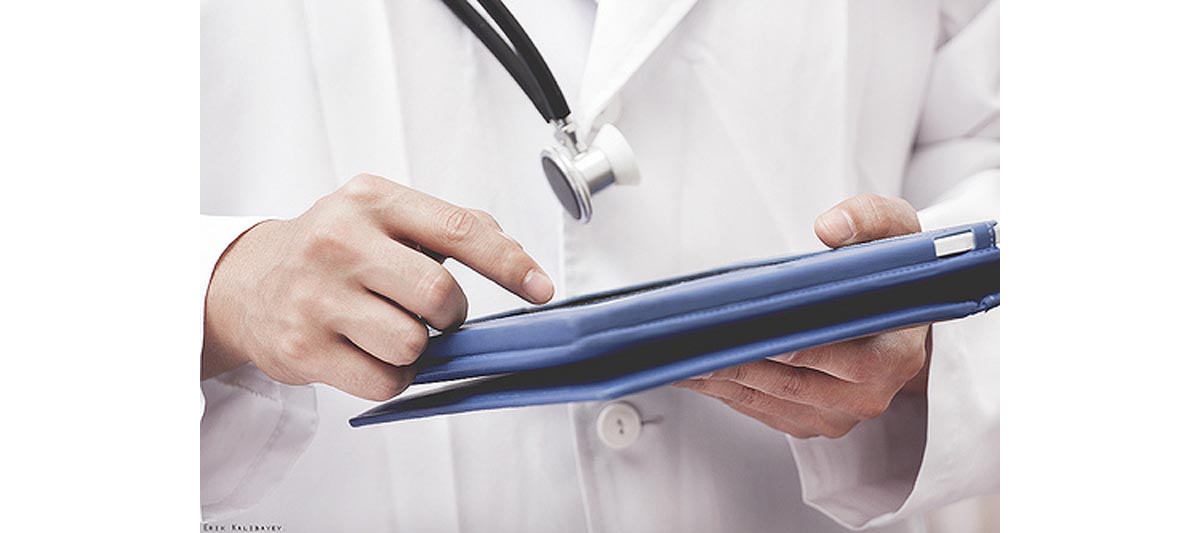Cancer can be treated rather successfully these days. Surgical techniques are constantly improving, and the tumors that were problematic to remove in not so distant past are operable now. Existing drugs, even though they are far from perfect, can successfully hunt down the remaining cancer cells in the body and ensure that the disease does not come back, at least for a long time.

All above is correct on the assumption that tumor is detected early. Unfortunately, early diagnosis of cancer can be quite difficult. On the early stages, disease is asymptomatic. As a result, cancer at this stage is more commonly found by chance in the course of routine medical checks.
Early diagnostics is key to successful cancer treatments
Thanks to the introduction of early accessible diagnostic approaches, some of the most common malignancies are now detected earlier and have much better survival rates. Introduction of breast screening by mammograms led to a significant drop in the breast cancer mortality. Similar effect was achieved by introducing PSA tests for the prostate cancer.
This early detection success is not shared by many other cancer types. For instance, lung cancer, the most common type of malignancies worldwide, remains notoriously difficult to discover at early stages. This is a contributing factor to the lung cancer survival statistics, which remains one of the worst among all cancers. Early diagnostic for many other cancers such as stomach cancer and ovarian cancer remains to be improved.
But cancer research is full of surprises, and breakthrough can come from completely unexpected corner. One of the new diagnostic techniques which receives lots of attention now is based on the use of breath tests. The idea is simple. Blood circulating through the lungs gives away some volatile products of our metabolism. In fact, a significant proportion of gaseous waste products from our body are removed by exhaling.
Cancerous cells produce significant amount of volatile chemicals that can be identified in the breath. Many of these chemical compounds are characteristic for cancer and not produced by normal cells of the body. They form a specific chemical signature that can be identified by analyzing the composition of exhaled air. The proper analysis of this kind can be done with the use of complex and sophisticated equipment, such as gas chromatography coupled with mass spectrometer. Unfortunately, this technique is too sophisticated for routine checks in hospitals. Interpretation of analytical results is also not easy and requires specially trained personnel.
Breath Tests Can Offer A Simple And Reliable Early Cancer Diagnostics
The idea of using the breath tests is not new but all meaningful developments in this area were hindered by technical difficulties.

Sniffer dogs can smell cancer
An interesting alternative approach was proposed by German researchers. They suggested to use sniffer dogs to detect cancer. In a small trial they checked the ability of specially trained dogs to recognize cancer’s chemical signature in the patients’ breath.
The success rate was surprising good: the dogs were able to identify 71 patients with lung cancer out of a possible 100, and correctly detected the absence of disease in 372 cases out of 400. They can detect cancer regardless of the smell of smoke and food, and also can distinguish cancer from other, non-cancerous condition.
Although the idea is attractive, the use of sniffer dogs is unlikely to enter the mainstream clinical practice. Training of dogs like this is not easy, and however reliable a dog might be, additional tests to confirm the canine diagnosis will be needed. There is also a problem with reliability of experiments with dogs. We have no way of saying what exactly the dogs are detecting. Researchers don’t rule out that the dogs in their experiments were detecting the smell of drugs used to treat lung cancer rather than the smell of tumor itself.
First breath tests for stomach cancer already developed
Earlier this year, researchers from China and Israel announced the development of first breath tests for stomach cancer. Tests detect a range of various cancer related volatile organic compounds in the breath and allow to make the conclusions about the presence and stage of disease with 90% accuracy. The test also distinguishes and helps to detect other non-cancerous conditions such as ulcers and problems caused by gastric infections.
The portable devices for general screening are now under development. Their introduction will help doctors in making faster and more precise diagnosis and treatment decisions both in general community settings and in hospitals.
Endoscopic examination and biopsy were so far the only reliable methods of diagnosing the stomach cancer. As a result, lots of patients are diagnosed late and the survival rate for this type of tumor is low. Only about 20% of patients survive for 5 years after initial diagnosis.
Similar breath tests are under development for other tumors (such as lung cancer and breast cancer). Breath tests would be a perfect practical solution for the problem of early cancer’s detection. They are portable, easy to perform, and the results are easy to interpret. They can be used in any hospital and don’t require specific sophisticated equipment or specially trained four-legged friends.
Breath tests for lung cancer will be particularly useful
The impact on the lung cancer detection might be particularly significant. Reliable early detection of lung cancer can only be achieved with the use of CT scans. Lung cancer in the beginning of its development can be easily missed by X-ray. Computer tomography, however, is complicated and expensive technique, and regular check-up by this method are not realistic for the majority of patients. Individuals from the high risk groups, such as heavy smokers, would greatly benefit from simpler and cheaper breath test detection technique. Lung cancer detected at stage I is operable and can be successfully treated. Survival rate for lung cancer patients diagnosed at stage I is comparable with that observed for other, more successfully treated types of tumors.
Simplicity of use is probably the biggest attraction of breath tests. If developed successfully, it will make cancer screening a normal routine and early detection of disease a rule rather than a lucky exception.
- Rainer Ehmann, Enole Boedeker, Uwe Friedrich et al. (2012) Canine scent detection in the diagnosis of lung cancer: Revisiting a puzzling phenomenon. European Respiratory Journal 39, no. 3, 669-676
- Z.-Q. Xu, Y. Y. Broza, R. Ionsecu, et al. (5 March 2013) A nanomaterial-based breath test for distinguishing gastric cancer from benign gastric conditions. British Journal of Cancer 108, 941-950.

